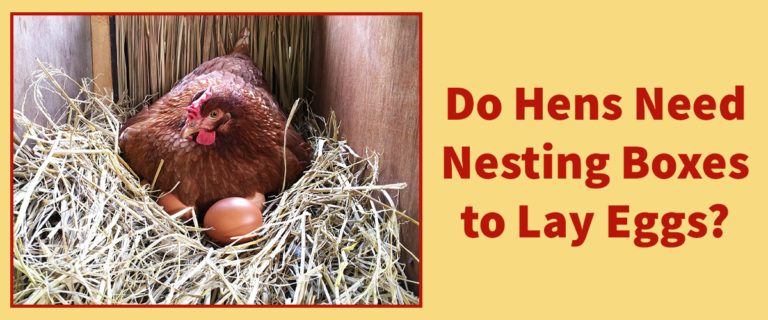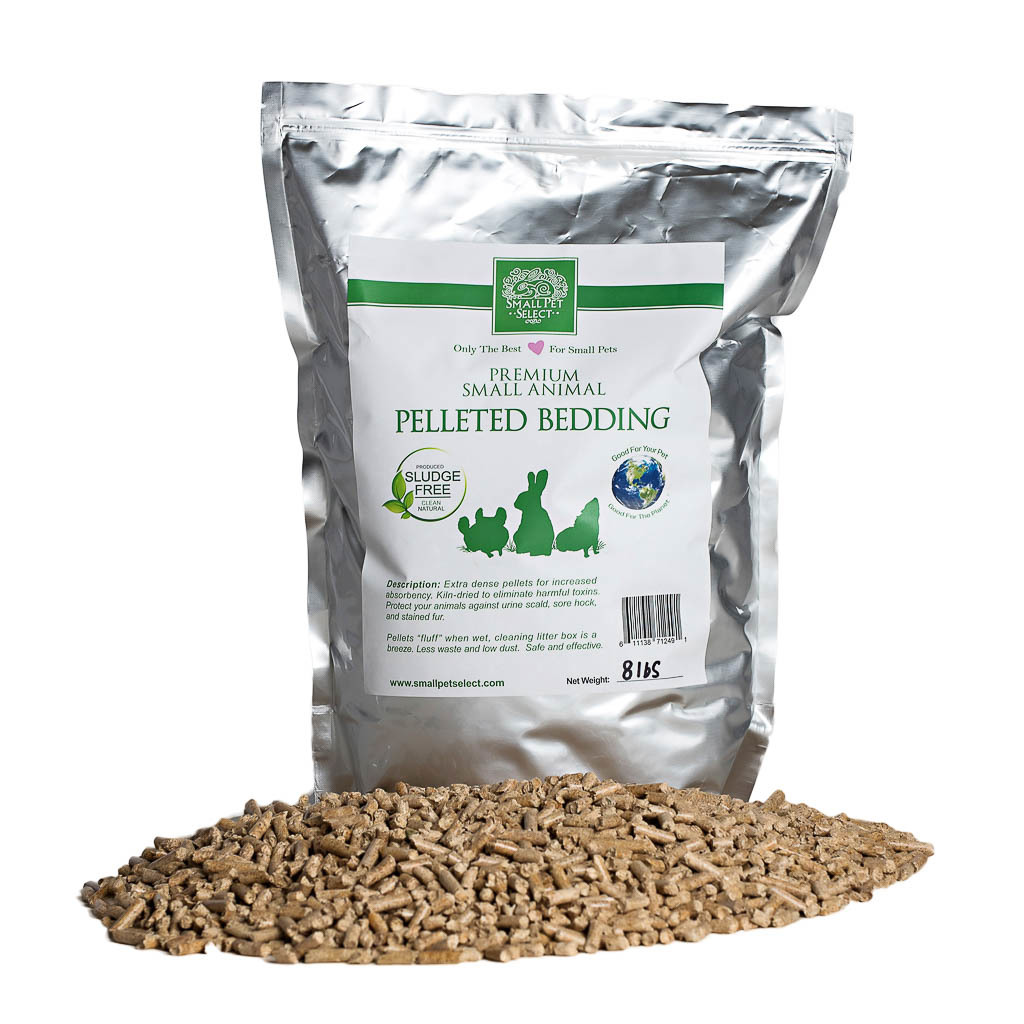On our never-ending quest to spoil our chickens, we want to ensure they have everything they need to be happy and healthy. One of the benefits of happy and healthy hens is delicious eggs. Today on Chicken Coop 📺 (CCTV) 😆, we’re going to discuss if hens need nesting boxes to lay eggs.
The Answer
Like the age-old question, “Which came first, the chicken or the egg?" the answer to "Do hens need nesting boxes to lay eggs?" is: it depends on your hen.
On average, chickens will lay an egg every day when they’re of laying age. If you’re not sure when that is, check out our article. Where they lay that egg is a different question. As prey animals, chickens like to feel safe. They will lay their eggs in a location where they feel secure. You may find eggs in random places such as under your porch or a hidden corner of your coop.
However, if you provide a comfy and protected nesting box, your hens should welcome a beautiful spot for egg-laying. Now, we said "should" as there's always that one chicken that does their own thing. Therefore, please don't take it egg-specially hard if they don't use the nesting box.
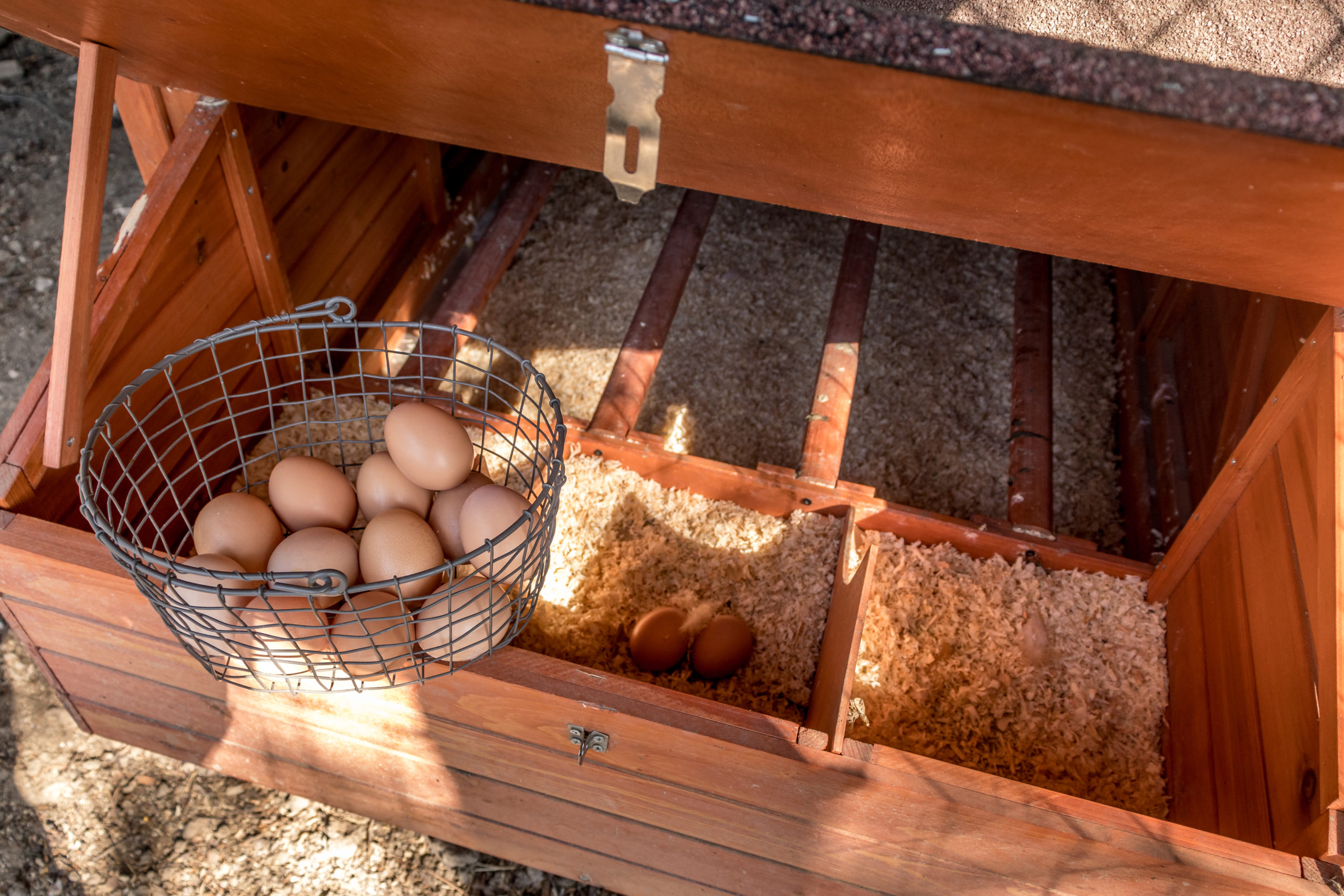
How Many Nesting Boxes do You Need?
The short answer is it depends on the size of your flock. Another question you may be asking is, "does each chicken need their own nesting box?" The answer to that is surprisingly no. The author doesn’t even like to share a bathroom, but three to four hens will share a nesting box. Like most other things, it’s better to have extras than not enough. You may find that more hens than that ratio use one box due to the time they like to lay their eggs.
Nesting boxes are for just that… nesting. Chickens don't sleep or roost in them. If you're not sure how to properly outfit your coop, we've got an article for that.
Where Do Nesting Boxes Go in the Coop?
You’ll want to put your nesting boxes below the roosts, but some hens like to have them up high in the corners of the coop. Ideally, they need to be in a dark, quiet location with little traffic. Make sure to have them off the ground at least 1.5 – 3 feet /4.5 – 9 meters to keep them clean and screw them securely to the coop walls. Having raised nesting boxes also prevents predators from stealing the eggs. The boxes can be stacked or put on shelves, depending on your coop layout. Ladders aren't necessary. Chickens can fly short distances, and predators can use the ladders to get into the nesting boxes.
What is Best for Nesting Boxes?
There are so many options for nesting boxes! You can purchase commercially made ones, or you can repurpose items you already have. Also, depending on the breeds you have, you may want different sizes. On average, each nesting box should be 16 inches x 16 inches/40 centimeters x 40 centimeters, but no smaller than 12 inches x 12 inches/30 centimeters x 30 centimeters.
If you repurpose materials, the boxes may not be square. However, each “box” should have the following qualities:
- Accessible for cleaning and removing the eggs daily.
- Easy to clean.
- Lip on the front to keep the nesting material and egg inside.
- Steep or curved roof towards the front. This discourages chickens from sitting on top and using the nesting boxes as a toilet.
- Made of sturdy materials, i.e., wood or metal. Lightweight plastic isn't recommended.
- A piece of fabric or burlap over the front for privacy.
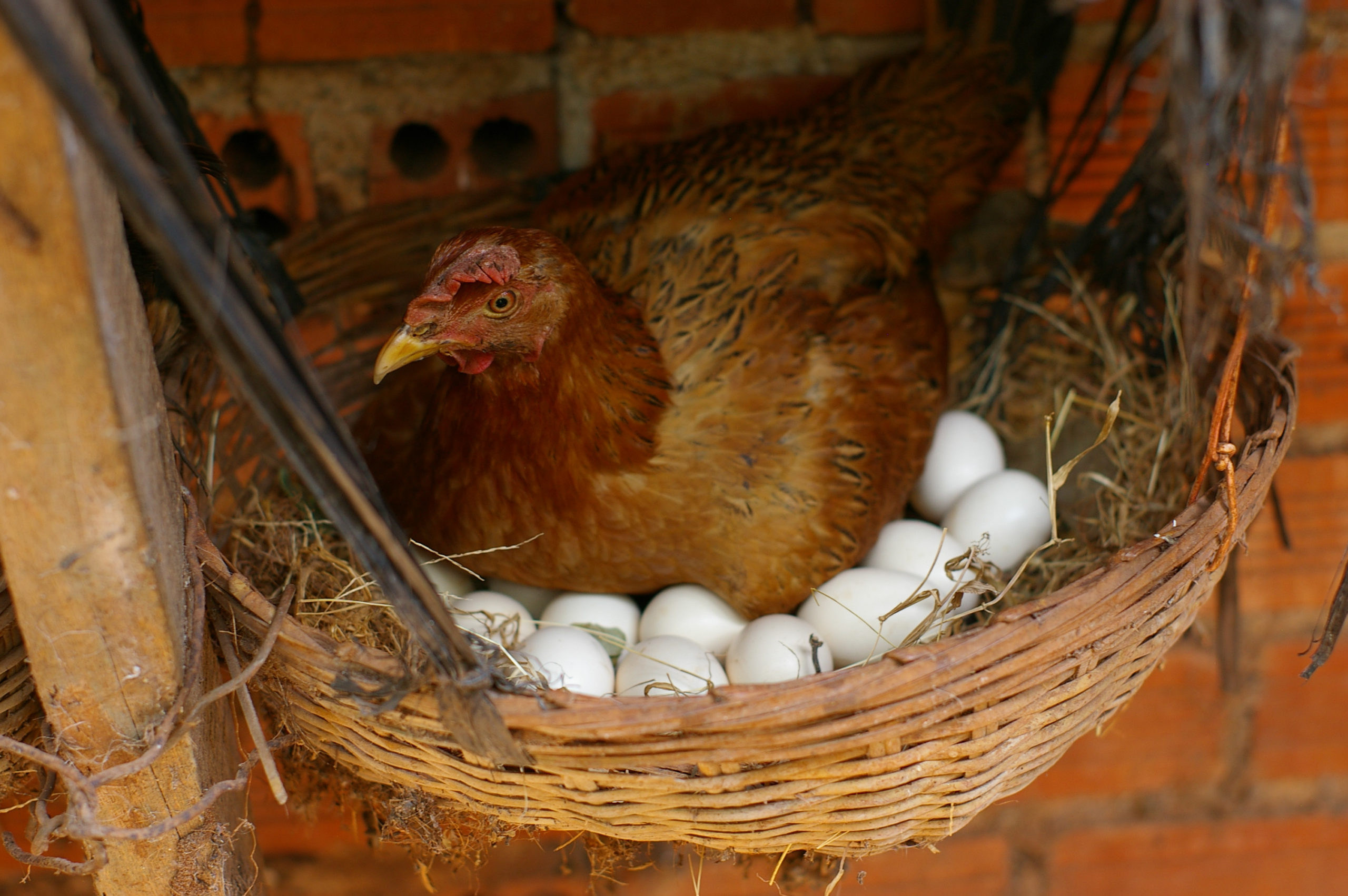
Here are some readily available household items you could use for nesting boxes. Whatever you choose, even commercial ones, clean them thoroughly before letting your chickens use them.
- Pet carriers
- Milk crates
- Covered cat litter boxes
- 5-gallon buckets
- (Wine) barrels
- Drawers (will need sides and a roof)
- Shallow trash cans
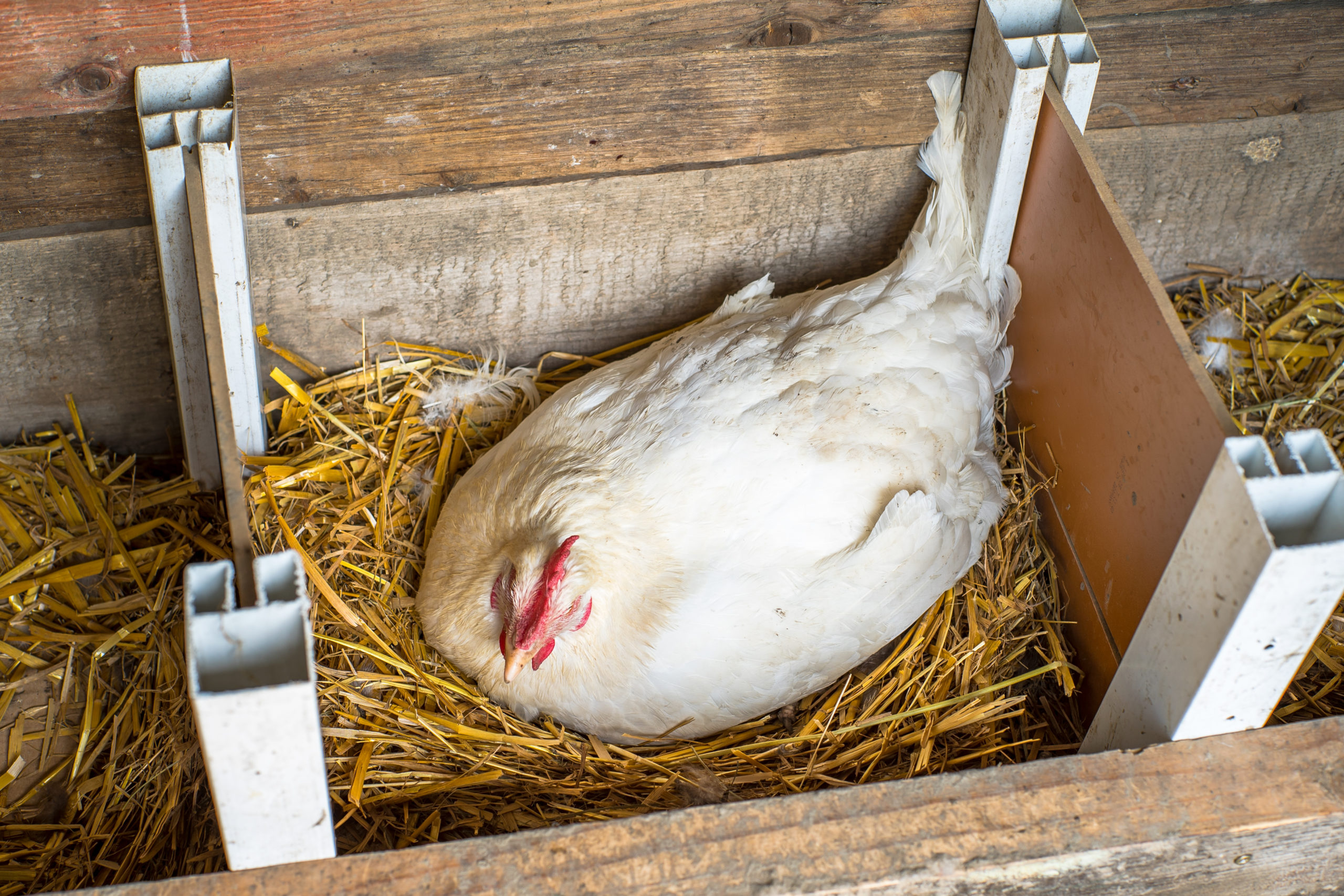
One long nesting box with improvised dividers.
Multiple wooden baskets used for nesting boxes. You can see how high they are off the floor here. Also, the windows are secured against predators.
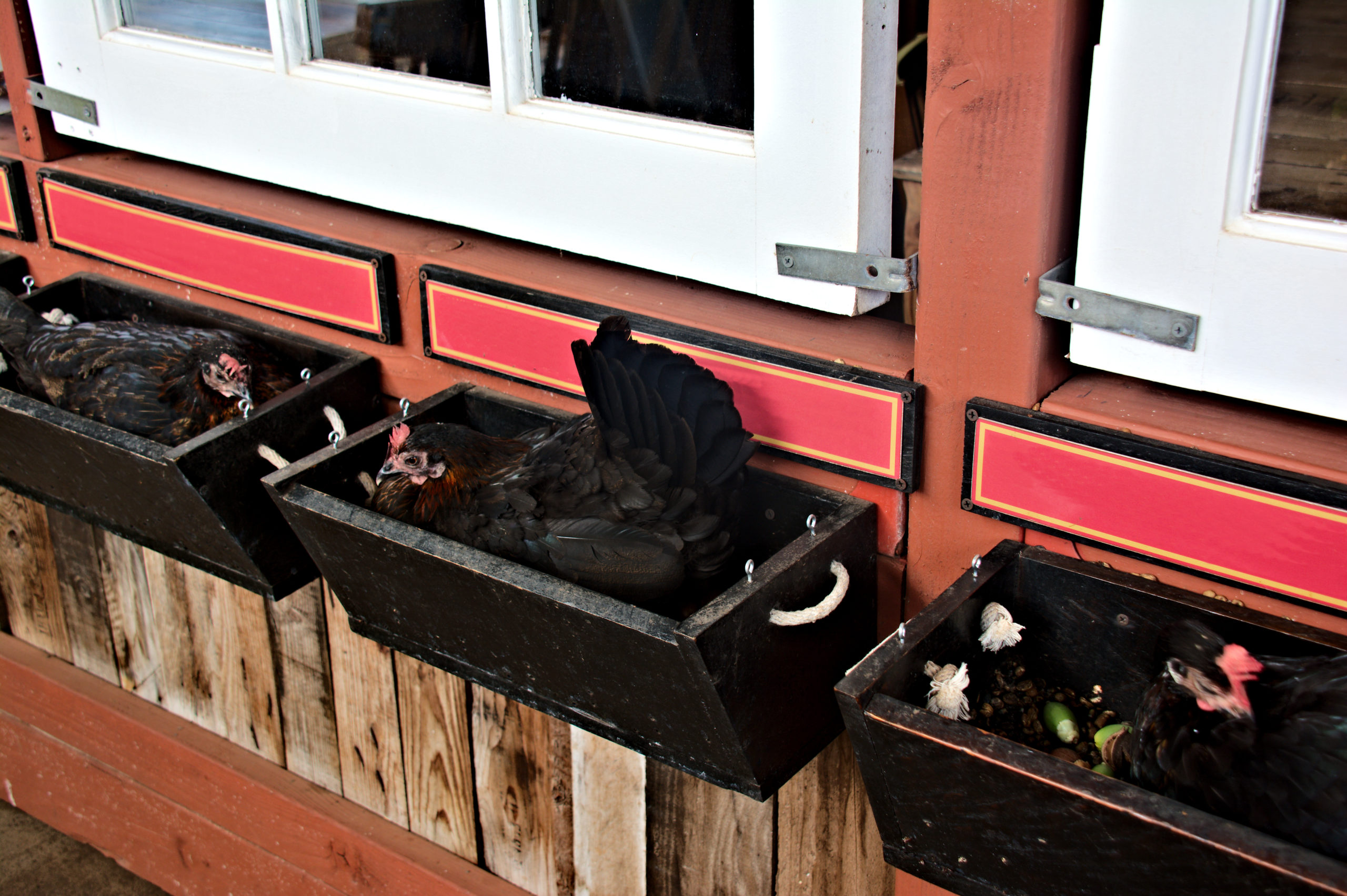
What do Chickens Like in Their Nesting Boxes?
The critical rule of chicken feet (thumb) here is you want to make your hens as comfy as possible while laying and protecting the eggs. Small Pet Select has a ready-made solution that covers both requirements.
Our pine bedding is perfect for your flock as it's 100% natural and biodegradable and 99% dust-free. Your hens can lay in comfort, and when it's time to clean their nesting boxes, the bedding is easy to swap out. The longest you want to go between changing the bedding is two weeks. The key to convincing your hens to use the nesting boxes is making them comfortable, clean, and safe.
Our pine bedding is perfect for your flock as it's 100% natural and biodegradable and 99% dust-free. Your hens can lay in comfort, and when it's time to clean their nesting boxes, the bedding is easy to swap out. The longest you want to go between changing the bedding is two weeks. The key to convincing your hens to use the nesting boxes is making them comfortable, clean, and safe.
To encourage use, put fake “eggs” in the nesting boxes. You can use plastic eggs, ping pong balls, or golf balls. Once your hens have gotten into the routine, you can remove the fake eggs.
If you want to make your nesting boxes egg-stra, provide a light snack for your hens while they’re in there. We recommend sprinkling our herbal blends near the top of the bedding and on top. Chickens love to forage and you’re giving them a yummy reward for their hard work.
Well, there you have it. When you’re ready, we’d love to come over for breakfast! We hope this blog was helpful and would love to hear your suggestions regarding nesting boxes. Please email them to hoomans@smallpetselect.com, send us a Facebook or Instagram message, or comment on our socials. Thank you!
Interested in reading more blogs about chickens? Check these out:
A Tour of Pittsburgh's Finest Chicken Coops...Backyard Chickens Rock



